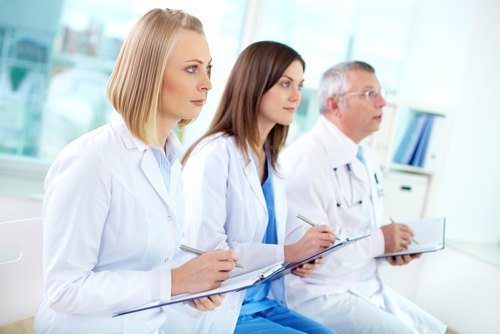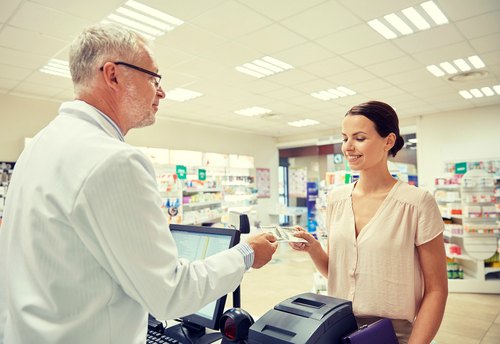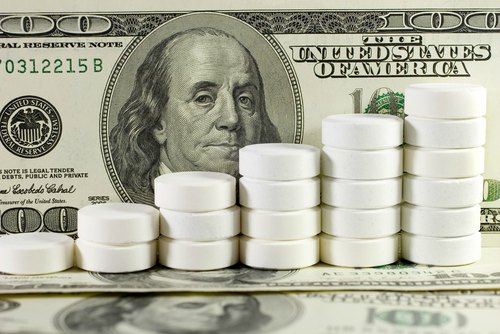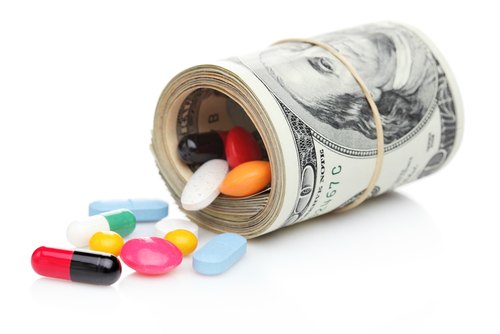Introduction (A Personal Experience)
I cannot believe that just 15 years ago I was living my life, with a wife and 3 children and we encountered a few bumps in the road, no big deal, and then my first child when he was at school the teacher complained to us that he was untidy and he did not seem to be listening and he was explosive on occasion, so she came to us and then we wheeled him into the family doctor who diagnosed ADHD and recommended to start a course of Ritalin.
Over the next 3 weeks my wife had the sense to stop the drug because he appeared to be high and lethargic. As the years went by our kids grew up, my son went on to Lycee (that’s the equivalent of a high school in North America ), except Lycee prepares you for first year university if you wish to go.
My first child whom the physician had diagnosed with ADHD went to university in Ottawa and then to London UK where he received his Masters degree.
Since he spoke 4 languages (English, French, German and Luxembourgish) having been raised in Luxembourg he learnt a fifth language Spanish and then a 6th language Mandarin and then a 7th language Hebrew. Now he works in Frankfurt as an analyst for a ratings agency.
A fair accomplishment for somebody with ADHD? Or was this an example of misdiagnosis….maybe he was bored with the curriculum.
Overtime, my wife become depressed and she began taking prozac and took to the bottle until she ended up with metastatic cancer which eventually took her life.
All the while discussing her demise with the oncologist who continued pumping her with poisonous drugs that I was unaware the harm it was inflicting on her..but at the time I thought well the doctor knows best, he is doing all he can.
I cannot blame the oncologist, he didn’t know any better, he was just following what he had been trained to do, working with the tools that were available to him. I did not know any better either at the time.
Medical Training
Conventional modern medicine is a Pharmacological driven system of health care.
Conventional Physicians are trained in allopathic medicine.
Wikipedia defines Allopathy as using Pharmacologically Active Agents or physical interventions to treat or suppress symptoms or pathophysiologic processes of diseases or conditions.
The NCI (National Cancer Institute) defines allopathic medicine as a system where medical doctors and other healthcare professionals (nurses,pharmacists,therapists) treat symptoms and diseases using drugs, radiation or surgery (What about CHEMO?).
Would be physicians need to complete a rigorous 4 year program at medical school + 3-7 years in residency, practising in a real life hospital environment.
The first 2 years of medical school consists of classroom and laboratory work in basic sciences including Anatomy, Biochemistry, Microbiology, Pathology and Pharmacology.
The third and fourth year students rotate at hospitals and clinics affiliated with their medical school.
The residency years involve working long hours and shifts so it’s hard work for new apprentice physicians and I must say I admire and respect the physicians that eventually work in ER for example.
This ‘WW1 trench warfare’ so to speak, where the physician is under immense pressure sometimes and the need to make the correct decisions quickly if somebody’s life is on the line.
Although, I believe most surgery is avoidable the surgeons who work in this area also must be admired for the work they do, in fact I play tennis with a surgeon and I have the greatest respect for him and at times the necessary work he performs, and I might add he cares for all his patients, and he is dedicated toward helping people.
It must be said, however, that most, if not all medical schools provide very little training to medical students regarding nutrition because the National academy of sciences recommend a minimum of 25 hours.
Therefore, we cannot expect physicians to comment on something they have not been trained in unless they followed a course outside of medical school if they had the time and/or interest.
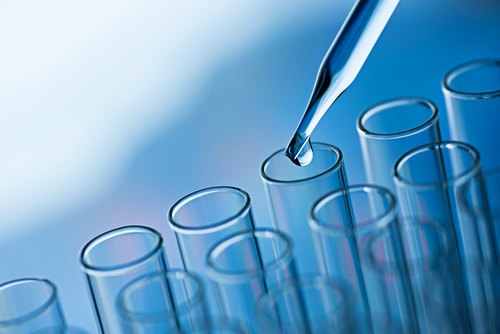
The Pharmaceuticals Product:
Readiness and Rigorous Testing
The huge pharmaceutical industry spend untold billions in chemical drug research so like any other business they seek a return on investment otherwise they would not be in business..seems fair, they have overheads like any other business, paying salaries, building leases, equipment, packaging of their products, keeping their investors happy private or public, they need their stock to maintain value.
I do not see a problem here.
This is the business model that keeps the machinery turning.
However, it is the mechanism that is behind getting their product to market that people question.
They are not selling sweets, candy or soap powder, they are selling a chemical that alters the physiology of the body, so they have to be careful not to unleash anything that will harm, but to do some good to people who are suffering or have fallen into biological disrepair.
To ensure that the product is safe they need an army of volunteers to take the drug for a predetermined amount of time, and to make doubly sure that it’s not a physiological effect on the volunteer that’s driving the change, but the actual drug itself, so they hire another army of people to take a sugar pill or placebo and compare the outcome between the 2 groups..this also seems reasonable and a very responsible course of action.
These drug trials could be many for trialing one drug, and some involve other comparative drugs to assess their effectiveness.
Once the trials are complete, reports are written containing drug data and results and once they are finished everything is submitted to a health care regulatory establishment who will approve or block the releasing of the product for human consumption.
Another very reasonable protective measure to ensure our safety and health.
The pharmaceutical companies are very thorough in these drug trials because they also conduct double blind studies, where neither volunteer taking the drug, nor the drug company trial orchestrators know who’s receiving what, the real drug or the placebo to prevent bias in research results.
I am impressed, this is another fail safe method to ensure drug safety at all times and their efforts to ensure impartial and honest results again protecting the general public from harm.
The Pharmaceuticals Clients and Distribution Channels
Once the regulatory authorities are satisfied with the data and reports on the new drug to be launched, and providing the reports are positive in terms of the drugs effectiveness and safety, then they are in a position to give the green light to the pharmaceutical company to launch their new product, ready to break the bottle of champagne against the hull and say “Bless all who sail in her“.
Who are the clients..they would be clinics, private medical practices and Health organizations, who are in fact the distribution channels for the pharmaceutical products.
So this where the marketing departments of the pharmaceutical companies are recruited to design the product sheets and organize advertising campaigns for the media and conventions.
In tandem with the marketing efforts, the sales side go on the road to make physicians,pharmacists, health care organization aware of this new and exciting product that has just become available.
I say it again if I were running a pharmaceutical company I would follow these same steps, it is only logical and let’s face it, some poor person suffering out there with a particular health challenge could benefit from this new drug.
In fact, through the generosity of the pharmaceutical company the sales representatives actually hand out free sample to physicians to give to patients free of charge to try without paying a penny.
This action is known as seed trails, so the drugs are free, and given to hundreds of physicians who simply use their patients to experiment a little and try out the drug so the sale reps can gather the data to feed back to their companies.
The results again are used to ensure that their product is safe and effective by using live test subjects to verify these two important criteria. Again, yet another safety checkpoint put in place and not letting anything to chance. It’s a pity that other companies don`t go through these same rigorous methods.
Pharmaceuticals protect our health or do they?
In the last two paragraphs I have outlined how pharmaceutical companies are setup to manufacture drugs to help combat disease and protect our health and conduct rigorous processes of drug testing and multiple trails to ensure our safety and well being.
So why are there over 2 million citizens who suffer severe adverse drug reactions and 100,000 citizens die from prescription pharmaceutical drugs???
-As per the statistics of Feb 2015.
Question 1 : Why do individuals need to take prescription drugs?
For everybody reading this article please ‘STOP READING’ and go the mirror and look at yourself..what do you see??, a unique wonderful remarkable organism that is built and constructed from the finest material ‘money can’t buy’….lol, a unique organism whose default state is HEALTH not to be SICK or DISEASED.
Why then are so many of you feeling sick, or even have some chronic disease, or dying ??. We are all basically constructed from the same blueprint, and we all have defense systems from organisms wishing to harm us, and if they do breach our security we all have the mechanisms to self heal, and to continue in health.
We all have self regulating systems..so why are some of you walking around like death warmed up, crawling into a doctor’s office asking for his help, asking for the pain to be taken away.
You are one of a very sick society that we have become because of the abuse of your own vessel of life.
I have written 17 articles (’90 essential Nutrients’) on why you MUST follow the guidelines of what fuel to put in your body to prevent physiological decay and devastation so I am not going to regurgitate it here.
The reason you are taking or contemplating taking a chemical drug is for a ‘quick fix’, and quite honestly conventional medicine is providing a service for you to ‘haul you out of the shit’ as it were, and I for one am glad that they are there to ‘save’ you from pain and suffering.
You know what they say however, ‘Take now pay later’ and indeed you will, either in quality of life and/or premature death because what did I say in an earlier paragraph ‘ a chemical that alters the physiology of the body ‘ which in the words of my colleague Dr. John Bergman,
“Here is a chemical that will make you feel more comfortable while it slowly erodes your health”.
In answer to the question as posed on the heading of this paragraph, because your consuming fuel that is not only toxic but contains no nutrition of any value to keep the machinery going, and the words of Dr Berg
“If you eat crap you are going to feel like crap”.
Furthermore the fire within you will only be fueled further with a toxic chemical so your body will become a :
‘Walking raging fire destined to burn out’
Pharmaceutical Companies Need Profits to Survive
(like any other company)
The Pharmaceutical companies like all companies are a profit driven business so all their employees can be successful and afford nice homes and sleeky cars and accumulate as much wealth because that’s important to them. I do not personally share that desire but some do, it’s called corporate greed like in the financial world and in the words of Gordon Gekko ( from the movie ‘Wall Street’)
“The point is, ladies and gentlemen, that greed, for lack of a better word, is good. Greed is right, greed works. Greed clarifies, cuts through, and captures the essence of the evolutionary spirit. Greed, in all of its forms: greed for life, for money, for love, knowledge, has marked the upward surge of mankind. And greed, you mark my words, will not only save Teldar Paper, but that other malfunctioning corporation called the USA. Thank you very much.”
In 2008 the world’s financial markets collapsed because of greed and ego, where long standing institutions such as Lehman brothers, went bankrupt and financial institutions created packaged mortgages and sold them to unsuspecting families without collateral that could not afford them because the regulatory agencies and individuals in high government posts allowed them to.
Many financial institutions in the US and Europe were gambling with their employees assets and the US alone, taxpayers had to foot the $700 billion bail out, and in their fervour they managed to convince Alan Greenspan, Chairman of the Federal Reserve to abolish the Glass Steagall act of 1932.
This regulatory act was instituted after the 1927 Wall street stock market collapse to protect investors and the economy from imploding again and to prevent high roll gambling on the stock market.
The very activity that was being played out again in 2008 and to maximise shareholder profits they needed deregulation by removing the only protection from Financial implosion the Glass Steagall Act.
As the movie describes the events that unfolded is aptly named ‘Too big to fail’.
The Pharmaceutical industry is in that same position ‘Too big to fail’, because government has allowed it to.
This ‘psychological drug’, this maniacal obsession to accumulate wealth at any cost ( lives as well) that fed the financial meltdown in 2008, has gradually crept in over the years within the Pharmacutical industry and their distribution arm medical practice, by prescribing pharmaceutical medicine without diagnosis such as assumed high cholesterol based on age and nothing else.
“Money really is the Root of all Evil”
The Pharmaceutical Industry
The Global pharmaceutical market sales exceeds $1.6 trillion/year shared amongst 10 companies with an estimated profitability of 30% on average.
From a business perspective these are incredible figures and impressive profits, and again I have to say from a business perspective these companies are doing everything right to maintain maximum profitability and if they are behaving against certain moral ethics within a lax regulatory framework they will continue to do it.
These companies are no different from the automobile industry for example, and this industry have no way near the profit margins that the pharmaceutical industry has.
For example GM first quarterly figures for 2017 showed a net income of $2.6 billion on sales worth $41.2 billion employing some 202,000, while Johnson and Johnson quarterly figures for 2017 showed a net income of $4.4 billion in sales worth $17.7 billion employing some 127,000.
The Pharmaceutical Industry: Glaxosmithkline
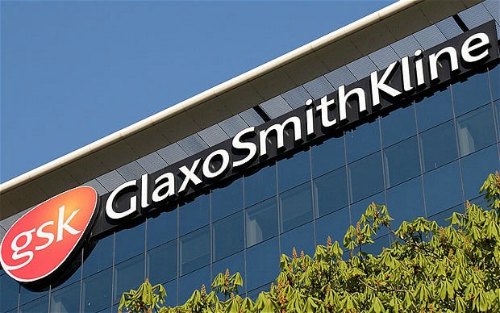
I remember walking to school everyday West London UK passing by Glaxo as it was known then and I had no idea who they were.
Glaxo began with Joseph Nathan who ran a small business in Wellington New Zealand in 1861 importing and exporting patent medicines and whalebone and his son Alec supervised an expansion in London selling infant formulae from an American dried milk process, which he added milk sugar lactose to and derived the name Glaxo.
They then began synthesizing vitamins to fortify infant foods and a stand alone Vitamin D product, which they knew was therapeutic toward Rickets since this bone condition was common in the 19th century.
In the 1930s Glaxo were producing Adexolin (Vitamins A & D) and Oster milk (the derivative of the dried milk formula).
During WWII they began to produce Penicillin and in the 1950s began steroid research and isolated Vitamin B12 in parallel with Merck Pharmaceuticals, forging ahead a treatment for Pernicious Anemia, as well as a synthetic hormone used to treat Hypothyroidism.
Then the discovery of Sisal (Agave sisalana), a tropical plant, native to Mexico used to make rope fibers, but when the sturdy leaves are processed (Juice extraction using Ethanol and then dried, the resultant sediment contains Hecogenin which is a Steroid Sapogenin), a substance that allowed the company to produce a series of Corticosteroids used to treat Peptic ulcers.
In 1973 research into Cephalosporins, a group of Antibiotics derived from Acremonium mold were found to kill bacteria by blocking enzymatic activity producing Peptidoglycan which is part of the bacterial cell wall.
As a result the Antibiotic drug Zinacef was released onto the market.
Near the end of the 1970s, Glaxo’s Anti-Ulcer drug Ranitidine was still being tested.
In 1981 Zantac an Antiacid Histamine H2 Antagonist drug that blocks the stomach’s ability to produce acid, was introduced on the market by Glaxo. and by 1987 it was the biggest selling prescription drug.
By 1984, Glaxo accounted for 25% of the world’s prescription market and on the basis of that, Glaxo built a $40 million plant in North Carolina.
All I can say is, there must have been millions of people out there suffering from Heartburn.
Then in 2000 Glaxo merged with Smithkline Beecham. Thomas Beecham was a family chemist (Pharmacist) who made Beechams laxative pills in 1842.
Actually, Beecham was a shepherd who sold herbal remedies on the side.
In 1942, Beecham acquired Lucozade glucose drink (I used to drink this, not a bad drink except for the Sodium Benzoate and Bisulphate preservatives, oh and the sunset yellow coloring agent).
They were famous for Beechams powders for fever and headache and I suppose I must have taken this during my childhood, however it contains Aspirin which is a NSAID (Non Steroidal Anti-Inflammatory).
Taking NSAIDs is not a good idea, since it blocks Cyclooxygenase (COX). also known as Prostaglandin-Endoperoxide Synthase an enzyme used to produce Prostaglandins that are essential for cell-cell signaling ( like local hormones that we discussed in the articles on Metabolic Typing), derived from Arachidonic Acid, a polyunsaturated Omega 6 Fatty acid.
Conclusion
In the next article we will discover how the pharmaceutical industry that was initially built on public safety, trust, and to do no harm, has developed a more darker side in terms of questionable relationships with their clientele, and testing and drug trials that has driven their business practices before the justice department around the globe.
We will uncover the regulatory authorities that should be a protective interface between the pharmaceutical and the processing food industry and the public but appear to have fallen asleep on their watch.
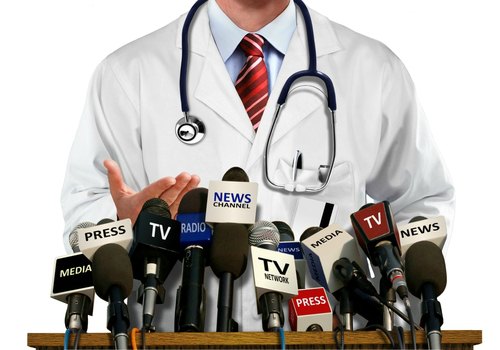
Reporter #1: Tonight, investigators are questioning the credibility of those clinical trials.
Woman #1: I’m very angry. I can’t believe doctors could betray so many people.
Man #1: I was part of the initial test group for the drug Vypra Xilin. And, I can say without a doubt it was probably the worst decision I’ve ever made in my life.
Man #2: These people knowingly put out inaccurate information and they were being selective in the facts about the case.
Woman #2: She looked at me and then collapsed. Her mouth filled with blood and… it was terrifying.
Reporter #2: In fact, an investigation by the FDA found no evidence of false data from Pierson pharmaceuticals.
Reporter #3: This is the third death attributed to the medication, with many more claims surfacing each day.
Woman #3: They need to be held accountable.
Quote from the movie Misconduct 2016
References/Acknowledgments:
- Status of nutrition education in medical schools Adams,lindell,kohlmeier,Zeisel 2006 NCBI
- What to expect in medical school Princeton review website
- Definition of allopathic medicine NCI, Wikipedia
- Quote from the movie Wall street I Wikiquotes
- Pharma domination in figures Alliance for natural health Feb 2016
- Quarterly results Johnson & Johnson Investor.jnj.com 2017
- GM earnings release first quarter 2017 GM.com
- 100,000 deaths/year in the US caused by prescription drugs Yournewswire.com Feb 2016
- Beecham group, GlaxoSmithKline Wikipedia
- Beechams powders netdoctor.co.uk
Author: Eric Malouin
